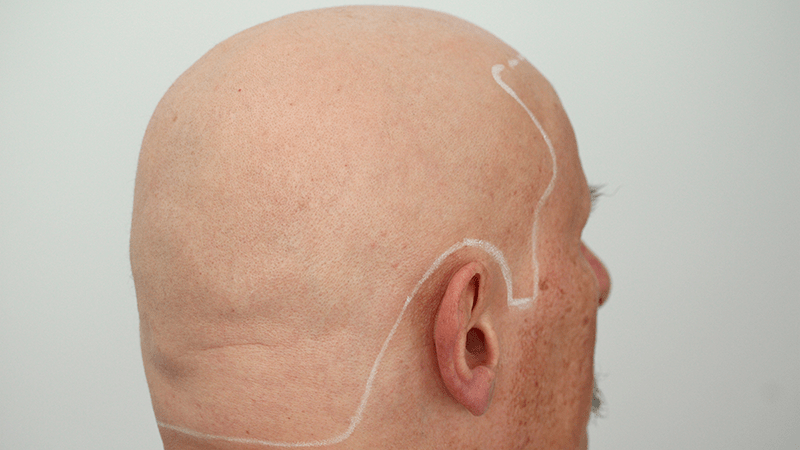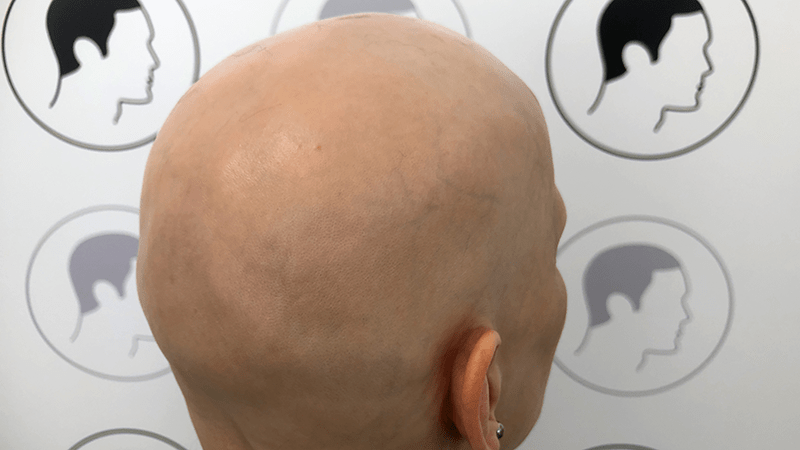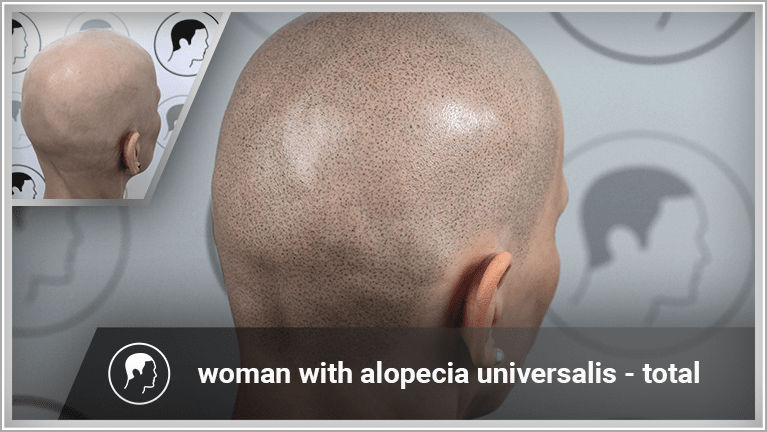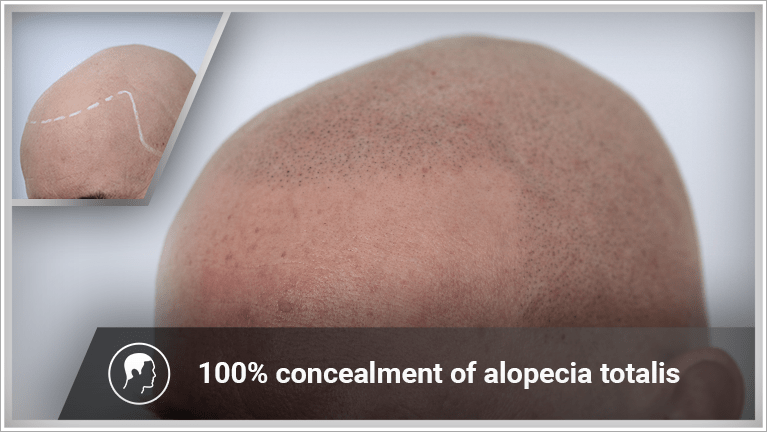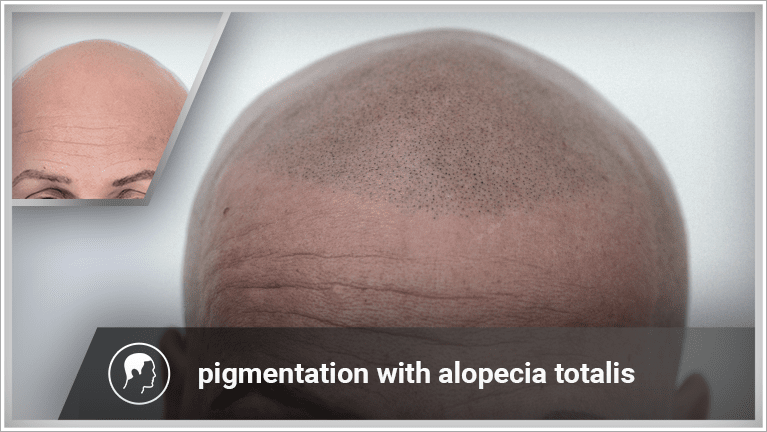Hair loss can take different forms. In men, hair loss often begins with a receding hairline, later followed by a bald patch towards the back of the head. This is usually caused by androgenetic hair loss. In women, this form of hair loss tends to lead to thinning hair along the parting. If the hair falls out suddenly in a clearly defined circular area, then we are dealing with so-called circular hair loss, which is also known as alopecia areata. In rare cases, alopecia areata goes away of its own accord and the hair loss stops. If it progresses, however, sufferers can go on to lose all the hair on their head. This is known as alopecia totalis.
What causes alopecia totalis?
Alopecia totalis is a form of alopecia areata, an autoimmune condition which leads to hair loss in round or oval patches. Alopecia areata usually affects the hair on the head, but can also affect the eyebrows or the beard. The body identifies its own hair as a foreign body and starts attacking it. The follicles become inflamed and the hair falls out. With alopecia areata and alopecia totalis, there is always a genetic element. This explains why the condition will sometimes affect several members of the same family. There are various triggers that can cause an outbreak of the condition, such as severe stress or psychological distress – following a bereavement, for example.
Nobody can predict the course the condition will take. In some people it may cause only one bald patch. Others may experience hair loss in several areas, or even across most of their head. With alopecia totalis, the sufferer ends up with no hair left on their head at all. This means that their eyebrows and eyelashes fall out as well as their head and beard hair.
Alopecia androgenetica in men and women
Alopecia androgenetica is the most common form of alopecia in both genders – but the symptoms and progression of the condition are different in men and women:
Can alopecia totalis be reversed?
In some cases, circular hair loss does go away of its own accord. After a while, the hair in the affected areas starts to grow back. Often, however, the condition will recur, and the hair will start to fall out again. If circular hair loss does not stop on its own, the doctor will consider various treatment options. These do not usually achieve lasting results, however.
Essentially, medical science is still in the dark about what causes autoimmune conditions. This means there are no guaranteed cures. Doctors do try to treat the symptoms in order to maintain the sufferer’s quality of life as far as possible. But they cannot fight the causes of the condition. In the rare cases where alopecia totalis goes away on its own, the hair can grow back again. When this happens, the hair is often very thin and white at first, because it lacks pigment. Only later does the structure of the hair change and its colour return.
The more advanced the hair loss, the less hope there is of recovery
The more pronounced someone’s circular hair loss is, the more likely they are to develop alopecia totalis. If only one area is affected over a long period of time, it’s more likely that this will be the only affected area than if several bald patches are present. If there are changes to the sufferer’s fingernails and toenails, they have a high chance of developing alopecia totalis. And the longer the condition has been present, the less likely it is to improve. If there is no improvement after three years, or if there is a progressive worsening of the condition, it can develop into alopecia totalis.
Alopecia totalis – a source of psychological distress for sufferers
Once large bald patches start to appear, sufferers of alopecia totalis often feel very distressed. A hair transplant does not help, because the immune system attacks the transplanted hair roots too. Scalp micropigmentation, on the other hand, is a permanent solution.
Pigment is applied into the uppermost layer of the skin, creating the illusion of full hair that has been shaved very short. This allows men to perfectly conceal total hair loss with a close-shaven look. And women who wear a wig due to alopecia totalis can also benefit from improved quality of life thanks to scalp micropigmentation. Whilst they may wish to wear a wig at work, for example, they might prefer to take it off at home. Scalp micropigmentation makes their head feel less “naked”. And when they look in the mirror, they no longer see their alopecia totalis. The natural-looking reworked hairline gives the face an attractive frame.
Do you want full-looking hair again?
With scalp micropigmentation, your dream can come true. Contact us for more information!
